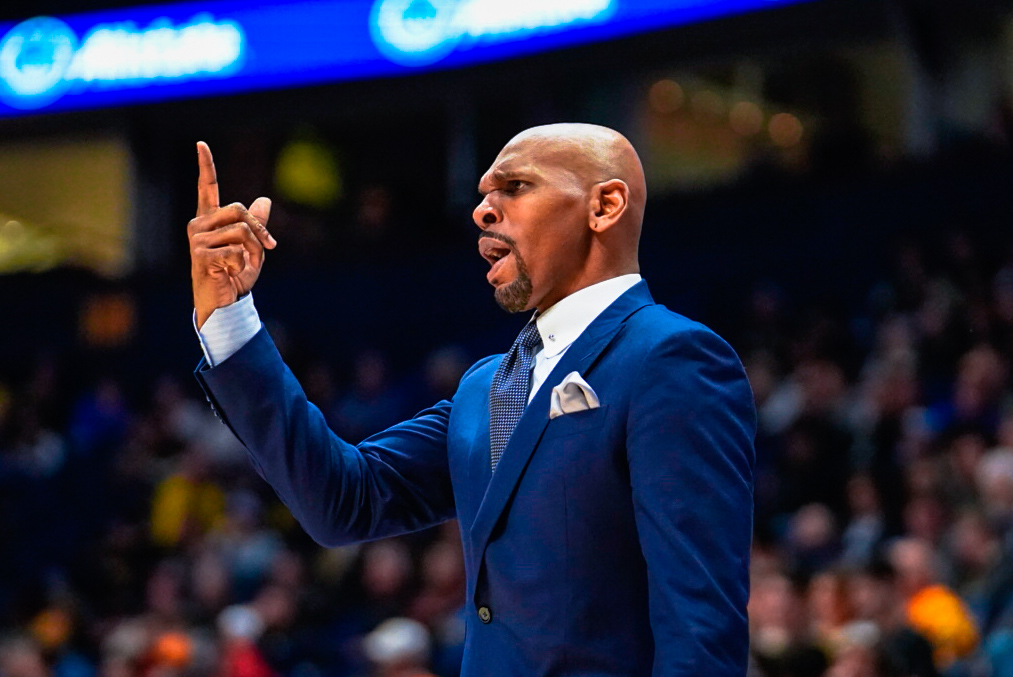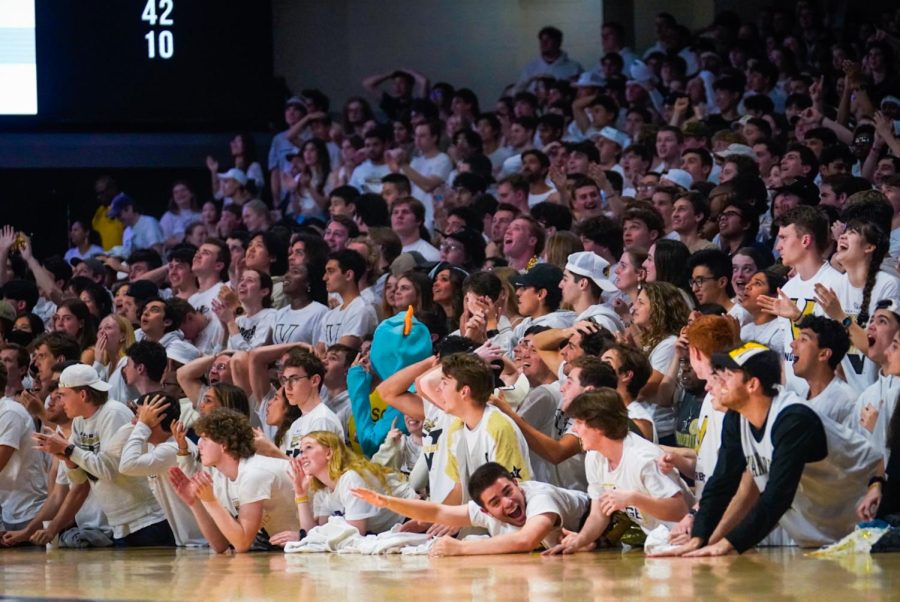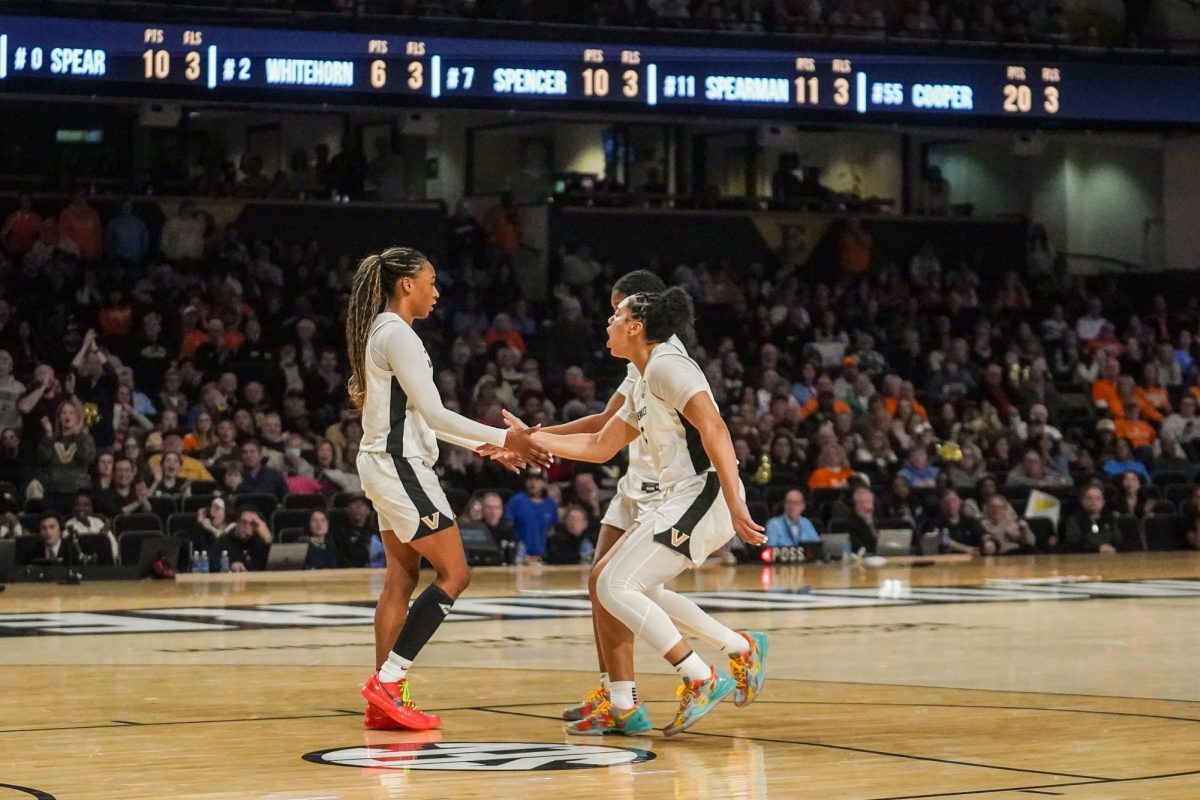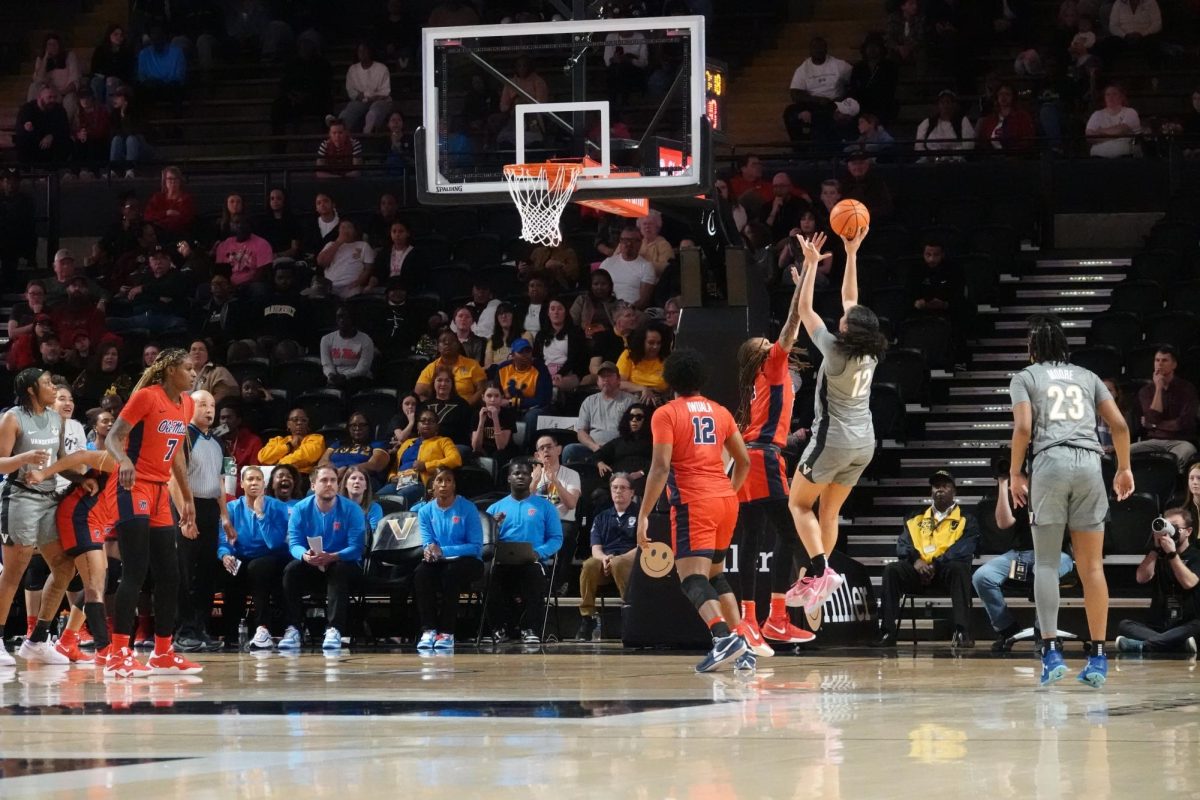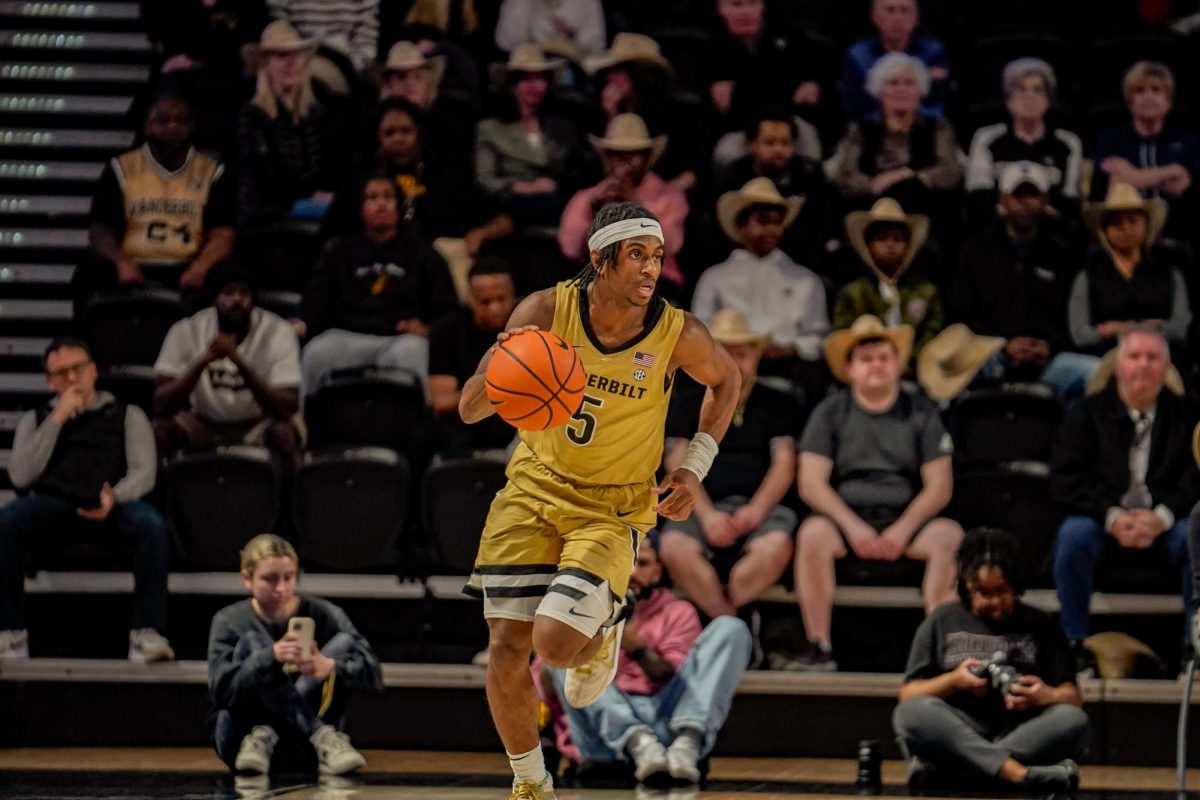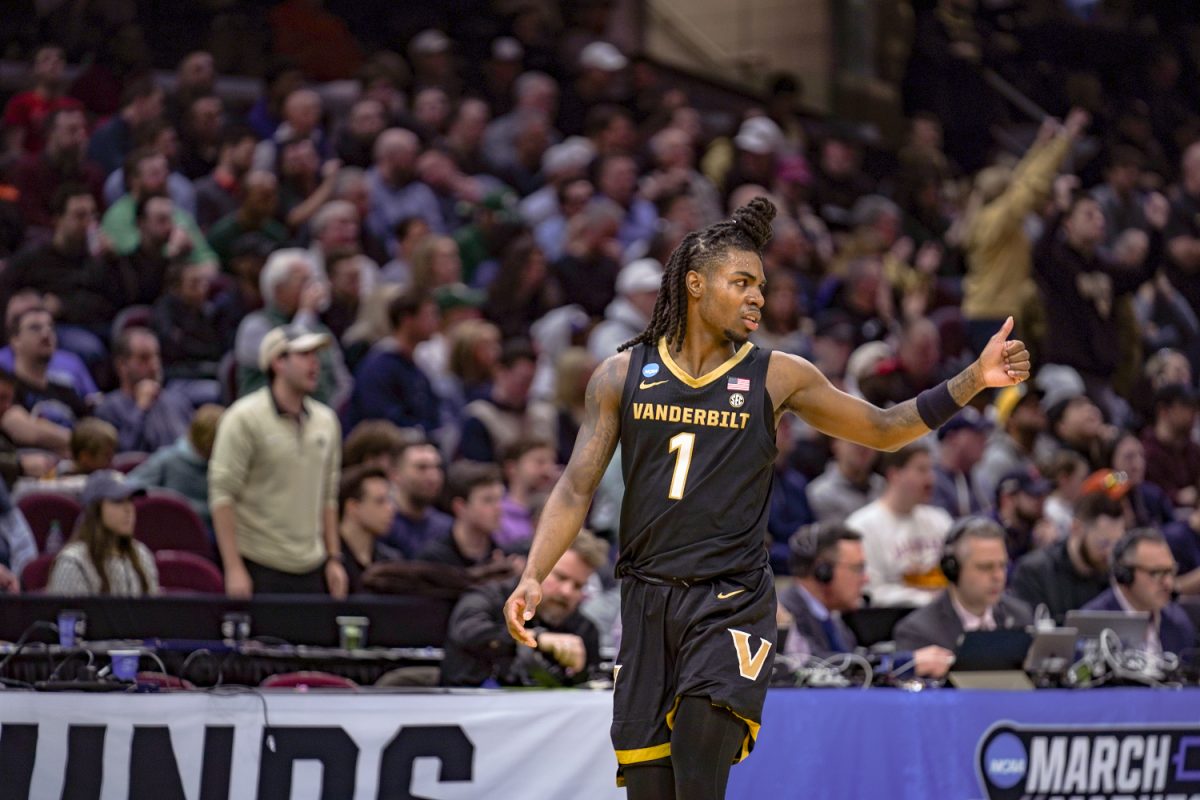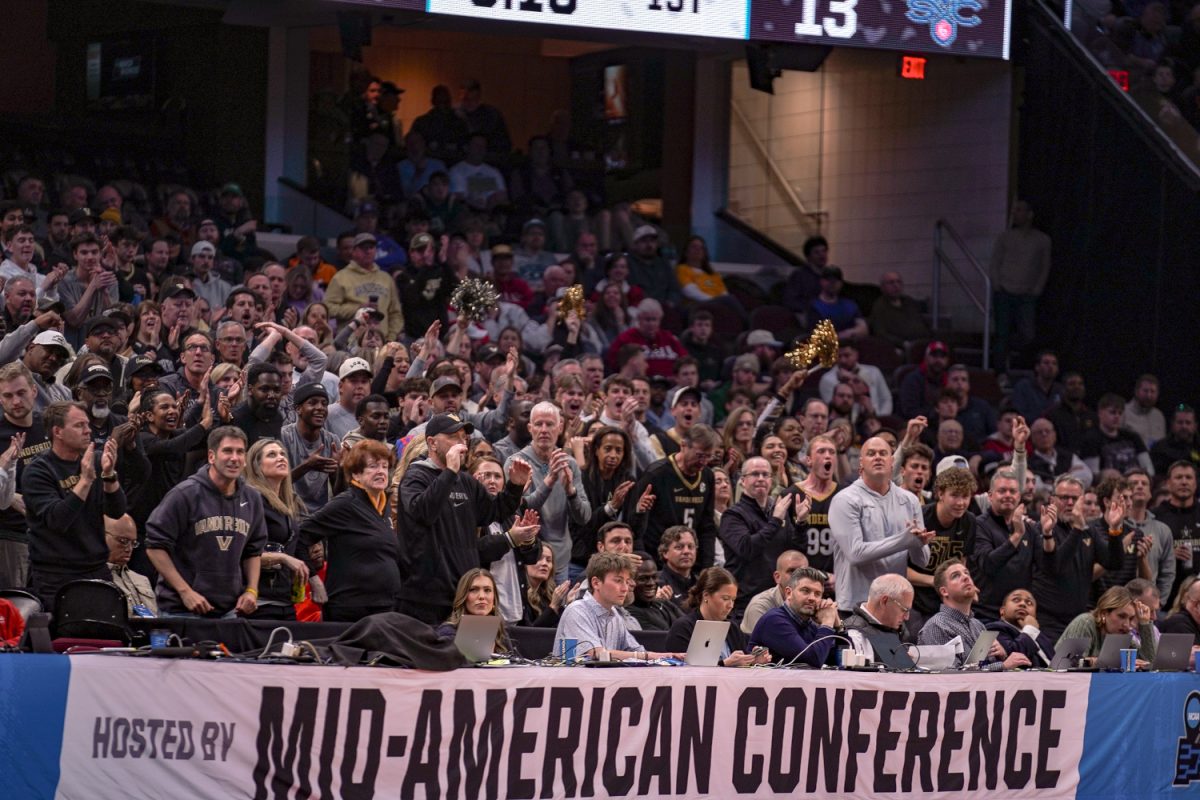Five seasons. Zero NCAA Tournament appearances. A 24-51 record in the SEC. And worst of all: a regressing basketball program.
“I’m excited that they feel that I’m the guy to bring the magic back to Memorial,” Vanderbilt head coach Jerry Stackhouse said in his introductory press conference back in 2019.
Nearly five years later, it’s difficult to point to what has changed from the broken program Stackhouse inherited that went 0-18 in the SEC. With Vanderbilt’s worst team of his tenure coming in Year 5, the results paint a gloomy picture of the highly-anticipated Stackhouse era in Nashville.
Fresh off of two more SEC blowouts at the hands of Auburn and Mississippi State, Vanderbilt is now 0-5 in the SEC and has not won a game in nearly a month. To be frank, Vanderbilt has done nothing particularly well this year; the Commodores are last in the SEC in points per game (67.9) by a wide margin and rank worst in the conference in adjusted defensive efficiency, per KenPom. Vanderbilt scored just 21 points in the first half against Mississippi State on Saturday en route to its third straight double-digit loss.
In fairness, the Commodores have lacked an identity for the better part of five years. Apart from a veteran-led late season surge following Vanderbilt’s 101-44 loss to Alabama last year, the Commodores have not come close to a winning record in the conference in Stackhouse’s tenure. This season, it would be a surprise if Vanderbilt is able to muster more than a few wins in the SEC. How much has changed in five seasons?
It’s difficult to exactly point at what plights Vanderbilt and why the years since the departure of head coach Kevin Stallings in 2016 have been so sour. At its heart, the program has struggled with recruiting, retention and finding an identity for the program in addition to the challenges brought in by NIL and the modern era of college basketball. There’s no single answer, but it’s blindingly obvious that changes need to be made and a wider evaluation of the program needs to be done. Let’s start with the common denominator.
The micro
Perhaps more glaring than any issues that have remained throughout the Stackhouse era in Nashville, the coach’s bizarre personnel decisions and player mismanagement have stuck out consistently. By my count, Vanderbilt’s starting lineup against Mississippi State — Ven-Allen Lubin, Tyrin Lawrence, Ezra Manjon, Evan Taylor and Jason-Rivera Torres — was its 12th different starting lineup of the season. No starting lineup combination has played more than two games together. Looking at the personnel decisions, it becomes more clear why this team cannot find a rhythm.
Year in, year out, these types of decisions have affected the quality of the program. Do any other SEC teams not have their rotations figured out by mid-January? Instead of finding their grooves in well-defined roles, Vanderbilt’s players seem to be auditioning for a starting spot every week. This type of experimentation can only hurt the players and has also played a major role in the nonconference blunders that have killed the team in the past few years. In one of Vanderbilt’s worst losses of all-time, this year’s season opener against KenPom’s No. 315 Presbyterian, Stackhouse played 11 different players in the first half and featured an all-freshmen lineup for a large part of the first half.
And, yes, the absences have been major. Losing Colin Smith and Lee Dort so early in the season undoubtedly threw the season into a bit of chaos and further stretched an already-thin frontcourt. And yet, it’s hard to fully attribute the weight of injuries and outgoing players to Vanderbilt’s current situation. Looking at the two veterans Stackhouse brought in to fill the production void — Taylor and Tasos Kamateros — both have thus far been unable to adjust their games to the SEC.
In today’s era of college basketball, the level of turnover the Commodores faced this offseason is the norm, not an outlier. And the fact that Vanderbilt was able to return arguably their two most important players from last season — Manjon and Lawrence — and have taken this big of a step back in Year 5 is alarming.
The transfers out of Vanderbilt have told a story of their own. Of the 13 players Vanderbilt recruited from high school from 2020-2022, just four remain on the Commodores’ roster. And that’s not even counting the biggest transfer of them all: Jordan Wright. Despite sharing that coming to Vanderbilt was one of the best decisions of his life, Wright transferred over the offseason to SEC rival LSU amidst rumored friction between him and Stackhouse. Thus far, Wright has averaged nearly 16 points and 6 rebounds a game as one of the premier wing players in the conference.
It’s difficult to quantify what losing such a productive frontcourt player meant for Vanderbilt’s prospects this year, but it’s not as hard to decipher what losing a four-year, through-and-through Commodore says about the state of this program.
The macro
Despite Vanderbilt getting hot at the end of last season, the Commodores narrowly missed out on the NCAA tournament. In reflecting on the year, much of the Commodores’ faithful and administration alike pointed to poor nonconference scheduling as a main factor in Vanderbilt coming up short. Rather than scheduling “tune-up” games to figure out rotations and pad NET stats like its other Power 5 competition, Vanderbilt was coming up against higher-end competition that could hurt its resume when the committee met in March.
So, Vanderbilt changed that this year and removed the elite mid-major squads, like VCU and St. Mary’s, from its nonconference schedule. Before the season, Stackhouse said at SEC Media Day that his team would “try to beat the hell out of everybody” in the nonconference games. Coming off of a 5-27 season, the Presbyterian Blue Hose were first.
And, of course, it’s hard to describe what a disaster this season has been. The numbers can do it any way you want, but it’s a failure of leadership more than anything else. The expectations were clear for Stackhouse and Vanderbilt this year: end the six-year NCAA Tournament drought. Instead, the Commodores are on a direct trip to the bottom of the conference.
When this season concludes, Vanderbilt’s streak of missing the Big Dance will likely extend to seven seasons, the majority of which have been overseen by Stackhouse. The last time Vanderbilt didn’t make the NCAA tournament for seven straight seasons was 37 years ago in the 1986-87 season.
The lack of accountability does not paint a necessarily bright picture, either. After Vanderbilt went 5-8 in nonconference, Stackhouse entirely walked back his Media Day statement, calling it an “off the cuff joke” and saying it’s “hard to win college basketball games.” Certainly convenient.
And that lack of accountability does not preclude blaming his own players. After Vanderbilt’s loss to Ole Miss last week, Stackhouse went on radio and said that despite wanting to go into the transfer portal and add upperclassmen, Vanderbilt is unable to do so.
“We don’t add juniors and seniors at Vanderbilt. They just don’t transfer to us — that’s what it is,” said Stackhouse.
That’s what it is. Despite Vanderbilt adding two of its best players in the Stackhouse era — Manjon and former center Liam Robbins — as upperclassmen transfers, that’s what it is. Stackhouse seems to believe that Vanderbilt has been put in an impossible spot of not being able to bid with the blue bloods in the new era of college basketball.
And maybe that’s partially true. Vanderbilt has been known as a spot where academics sometimes come in the way of reaching full athletic potential. And as a place where the wallets for athletic investment aren’t as deep as they are elsewhere. But we’ve all seen coaches do much more with much, much less. Inferring Vanderbilt isn’t a place where people would want to come to win is flat-out wrong and certainly shouldn’t be the opinion of the coach in charge of leading your program.
Spiraling out of control
Where from here?
As mentioned above, finding nearly any wins on Vanderbilt’s remaining schedule is a difficult task. With the SEC looking as strong as it has in years and Vanderbilt’s demonstrated ineptitude, the Commodores are certainly in for a rough ride over the next month and a half.
After that, a long offseason of questions awaits. In today’s environment, it’s a near certainty that Vanderbilt’s opponents have seen the dysfunction and imagined which of the Commodores they could see in their colors next season. Vanderbilt’s biggest concern will most likely be Jason Rivera-Torres, who has been one of Stackhouse’s most productive players this season as a freshman. Of Vanderbilt’s 15 active players, 12 had started a game before Vanderbilt’s loss to Mississippi State. Of the three that hadn’t, two were walk-ons and one was Rivera-Torres. Bulletin board material for coaches in the portal next year.
On the flip side, in an increasingly competitive portal, Vanderbilt will certainly have a tough time convincing top recruits to join the program. While the allure of playing in the SEC’s best academic school is attractive, the evidence shows what a tough time Vanderbilt has had developing talent over the past few seasons.
But more than rotation decisions and post-game comments, this appears to be a program that’s been going backwards. Stackhouse absolutely inherited a program in disarray — there’s no doubt about it. Turning around a program that went winless in the SEC is a herculean task and would be difficult for any coach and leader.
Yet, as Vanderbilt navigates a new era of college basketball, it must consider how to take the next steps towards becoming the respectable program that it is. If the last five seasons are any indication, it may be time to turn the page on the Stackhouse era.



